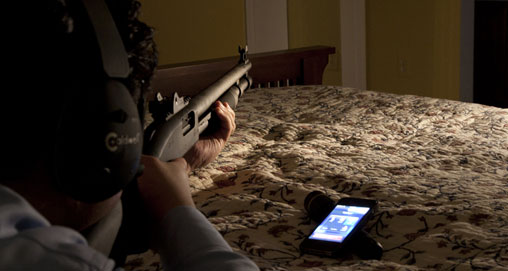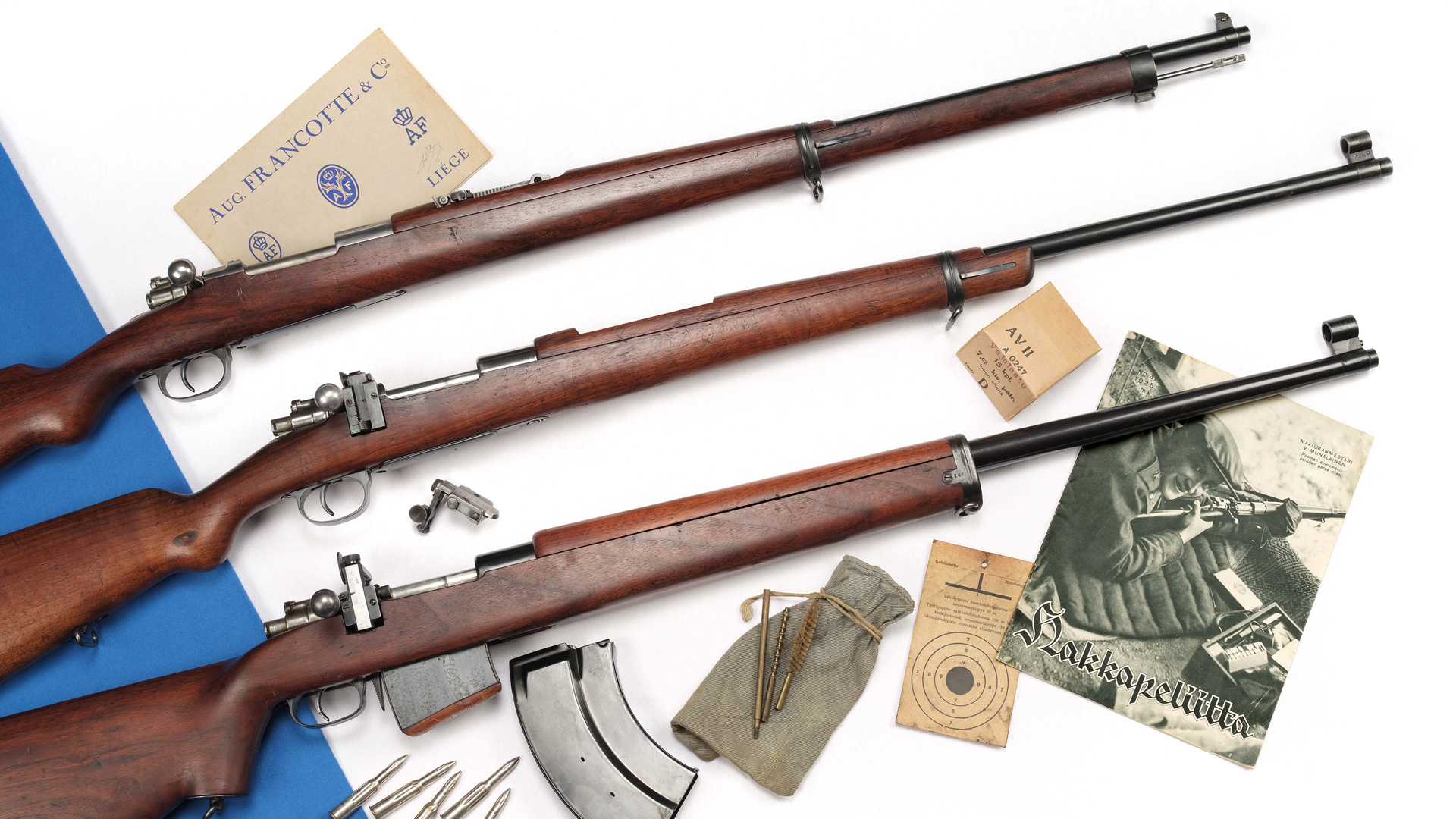
12/3/2012
The saying goes like this: A man’s home is his castle. If you're a regular reader of firearm publications, then you already know there's no shortage of information available regarding firearms for home protection. And while we have plenty of good reasons to carefully select and regularly practice with reliable defensive firearms, they represent only a portion of what should be a better-rounded and more inclusive home-preparedness plan.
It's important to remember that guns don't make us "safe." They represent a last line of protection when all other home-based defenses and deterrents have failed, or have been bypassed by individuals with intent on doing harm. The purpose of this discussion is not to underplay the importance of defensive firearms, but to point out a few precautions and tools available to increase home security.
Getting Home
It was shortly after Hurricane Katrina that I found myself in a lunch group made up of co-workers discussing emergency preparedness. One subject that came up was transportation. How exactly would folks get home from the work site if there was a natural disaster, terrorist attack or some other needful reason to get home quickly? A member of the group said he planned to run for it, literally.
He had taken up the hobby of participating in local triathlons and kept his running shoes and clothing in the trunk of his car. He went on to explain that in a situation where traffic routes to his home were blocked, or the traffic jammed, he had mapped out a couple of foot routes that would allow him to run to his house in about 20 minutes. The group politely chuckled at this idea, since we knew he was in shape to do it but we were not. But we had to agree that his plan was far better than the one most of us had, which was no plan at all. It was a strong reminder that no amount of home preparation will be sufficient if we're not there to use it.
Consider filling up a vehicle’s fuel tank when it’s half-way empty instead of nearing completely dry. Keep vehicles in good repair with season-appropriate tires mounted. Map out and test alternate routes to your home. Work with your family to organize an emergency contact plan to get in touch with each of them if there is a need to get home, or to let you know if they are going to need help getting there. Take a look and see if an alternative transportation strategy (subway, by foot, bicycle) could be used if driving home is not a practical option.
"Hardening" A Home
The term "target hardening" is used by military and security professionals to describe the process in which a building is enhanced or altered to make it a less desirable, and a more difficult, object of attack. This does not mean converting a structure into an impenetrable bunker per se, but increasing the level of security to the highest level a building can reasonably support. Hardening a home has two important benefits. First, it makes the home less appealing to thieves and burglars who are looking for easy marks to exploit. Second, added security measures provide a home owner with the single most precious commodity in a self-defense situation—time. The more time it takes a crook to break through the external defenses, the more time the home defender has to access internal defenses and to alert the authorities to the situation.
Hardening a home consists of installing a variety of affordable and common-sense options that most home owners can easily implement. Look into installing a security alarm system, if you don't already have one in place. If you are not in the habit of using it, then get it programmed properly and keep it activated. If an integrated security system isn’t an option, then take a look at attaching noise emitters to windows and doors. Take the time to get to know your neighbors and keep an eye on each other’s properties when out of town. One of the best alert systems has been protecting people for thousands of years, and enjoys going for walks and catching frisbees. If you like dogs, then consider adding a four-legged family member.
Install strong doors and door locks. Upgrade the window locks, plant thorny bushes under windows and remove objects that could potentially be used as impromptu step stools for easier access. Don’t forget to upgrade second or third story access points as well. Plenty of criminals are willing to do some climbing to get what they want. Walk around the perimeter of the house and identify problem areas, such as easy points of access or spots that are concealed from view of other houses or the street. Consider changing the landscaping or the fence line to solve these issues.
Possibly the best, and most affordable, exterior home security option is motion-activated lighting. Place lights with sensors in strategic locations to activate when anyone approaches the doors or driveway. A sudden flood of startling illumination will not only work to frighten criminals who want to sneak around, but it will also allow the occupants to clearly see if any threats are lurking about as they exit or enter the home at night.
Defending the Doors
A disturbing trend in modern crime is what has become commonly known as a home invasion. This style of attack can be carried off by one person, but the criminals usually team up for the event. They knock politely, sometimes using a vulnerable looking or disguised decoy, present a reason for the person inside the home to open the door, and then rush the occupant to force entry into the house or apartment.
While the idea of being assaulted at your own front door is frightening, there are strategies for mitigating this kind of danger. Look through a peep hole or a window before opening a door to verify who is knocking. If anything about the situation looks strange or feels weird, communicate through the door instead of opening it. This is especially true late at night. It may not seem very charitable to shout through a closed door at 3 a.m. that there’s a gas station two blocks away to a stranger who says his or her car broke down. But then again, it may be the safest option in that situation.
There are times when we must the open door to deal with people. Consider installing a steel security door, many of which look like fancy screen doors, that can remain locked when the front door is open. Even if all you have is a light screen door, keeping it locked may provide the moments needed to shut and lock the main door. If your living accommodations won't allow for a security door, then install an interior security chain. Having some sort of device in place to slow an uninvited guest is better than nothing at all.
One simple security practice is to tell friends and family that if they need to come to your home at night to call ahead and let you know they are on the way. The least expensive security system around the doorway is situational awareness. Some folks turn on the danger radar when they arrive at other locations, like shopping areas or their work place parking lots. Situational awareness should be up and running before leaving the house and fully active while approaching and entering the home.
Plan, Organize, and Practice
During a recent conversation with a defensive shooting instructor, he shared the story of a student who had a close call with a burglar. This person had a relatively advanced level of defensive training and knew how to use the guns, lights and other gear he had lined up for a home-defense situation. One night he and his wife heard that dreaded bump in the night.
This is when, according to the student, he began to make important mistakes. In the panic induced by the fear of being attacked, he found himself scrambling to gather items that were spread out around the house. He forgot strategies and training points as he struggled to communicate with his spouse and respond to the situation. Luckily, when it became clear that someone was home and paying attention, the burglar stopped trying to gain entry and ran away. This was a best-case scenario and a wake-up call rolled into one. No one in his family was hurt, which is always the best outcome we can hope for. But in spite of this student’s gun training, he and his family had not actually developed and practiced a defensive plan.
The house-hardening choices we make, the security strategies adopted and the defensive firearms purchased cannot be used to their best advantage without having a clear plan to bring them all together in a meaningful way when a threat shows itself. Be prepared to communicate instructions, to access defensive tools and to engage the threat in the safest manner the situation will allow. Be sure to take the time to work with your spouse and the other members of your household who are old enough to understand the plan and support it.
Although it's not possible for one article to contain an all-inclusive list of tips, tricks and tactics for a home-defense plan, the Internet is a valuable resource to learn and share ideas. If you have additional products, ideas or strategies to volunteer, then by all means post a comment and share it with the rest of us.



































